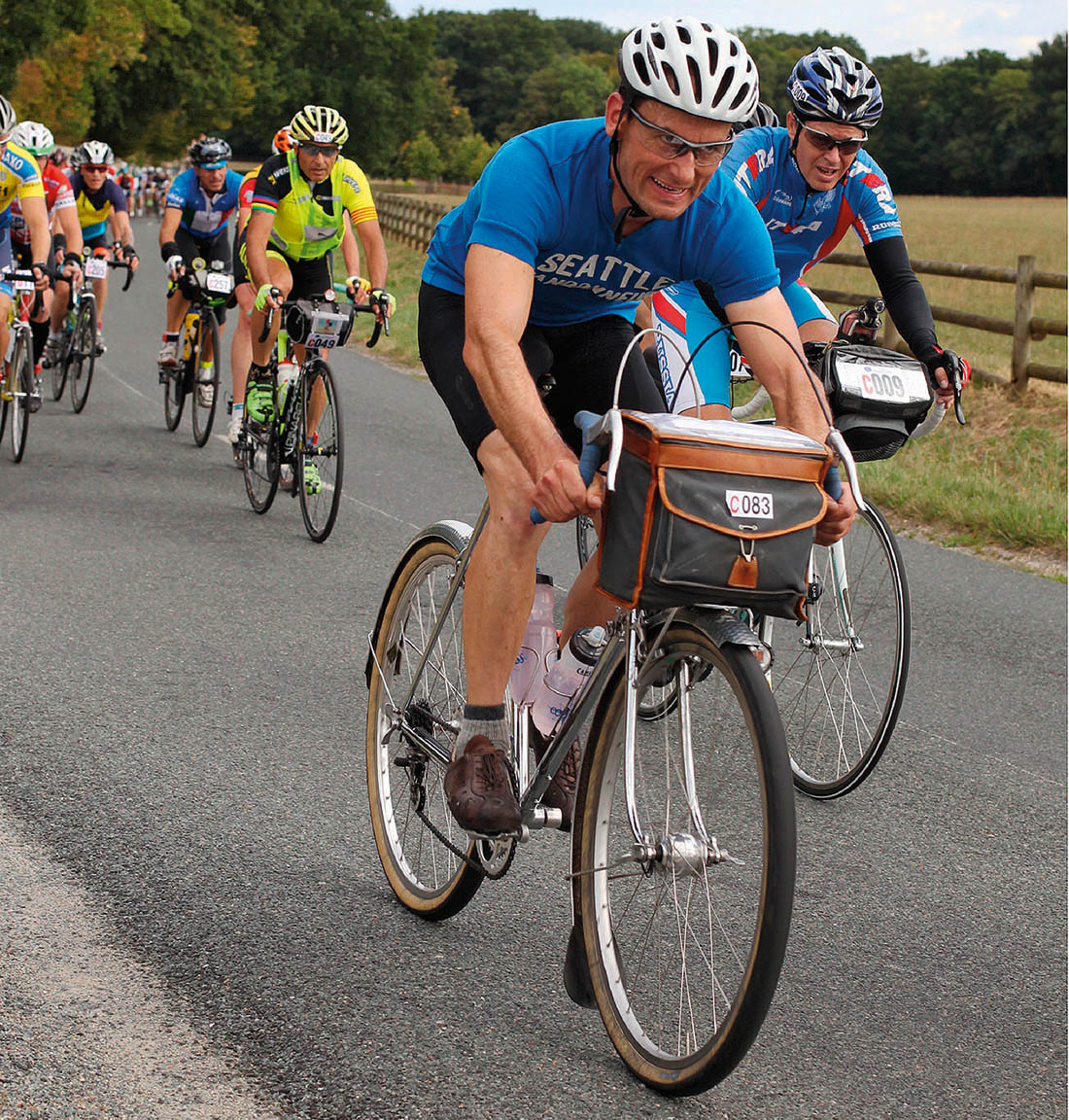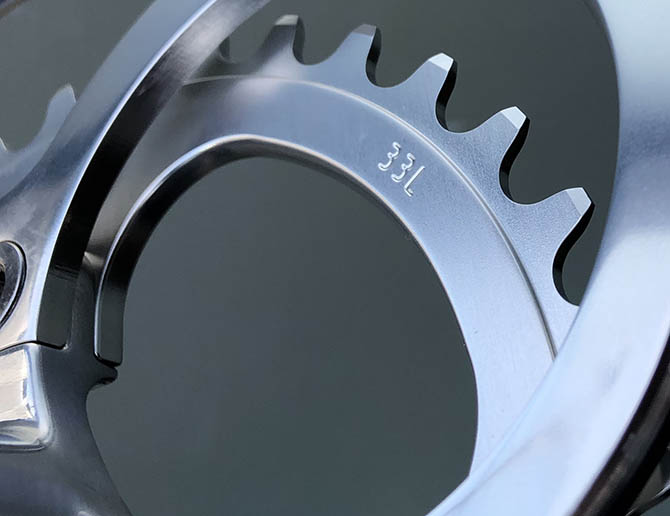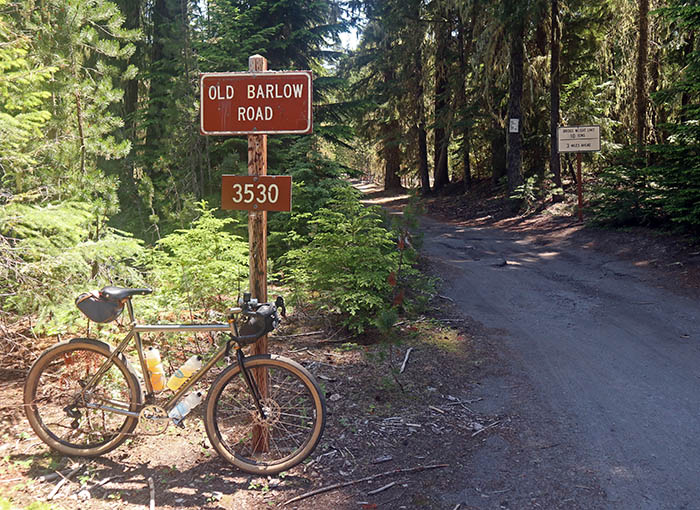48/33 Rings for Rene Herse Cranks

We’re offering a new chainring combination for our 11-speed compatible Rene Herse cranks. The 48/33 is a perfect size for fast-paced group rides – you won’t get dropped even on downhills with a tailwind, yet the 48 is a bit smaller than the more common 50, allowing you to stay in the big ring on most hills. And if it gets really steep, the 33 extends your range down to a 1:1 gear with most cassettes – or beyond.

This is the combination that I ride in Paris-Brest-Paris, where strong tailwinds and fast groups can require slightly bigger gears than we use during our adventures in the Cascade Mountains.
Why the 15-tooth step between chainrings rather than the more common 16-tooth? To understand why a 48/32 doesn’t work well, let’s look at how ramped-and-pinned chainrings work.

The pins pick up the chain and lift it onto the big ring. The ramps only make room for the chain, so it can smoothly climb onto the big ring; they don’t actually lift the chain.
Chains are made of ‘inner’ and ‘outer’ links. The pins on the large chainring work only if they mesh with an ‘outer’ chain link, right in the middle of the link (above). Inner links are recessed and won’t touch the pin.
The problem with a 48/32 is that both tooth counts are divisible by 16. This means that there are 16 possible positions for the pins. The bad news is that those 16 positions always hit the same chain link – either an inner or an outer – depending on how the chain is placed on the chainring. If the pins always hit inner links, they won’t help with the shifting at all.
In other words, the 16 possible pin positions on a 48/32 ring are duplicates. What you need are (at least) two distinct positions, so there’s always a pin that hits an outer link – no matter how the chain goes on the ring.

That is why we make a 48/33, where the pins always line up with outer (and inner) chainlinks, no matter how the chain is placed on the ring. That is how all ramped-and-pinned chainrings work: Half the pins don’t do anything, but the other half pick up the chain reliably. It doesn’t matter how the chain is positioned on the chainring – half the pins line up correctly.
Now you can see why ramped-and-pinned chainrings only work in pairs. That is why the big ring is marked not just with its own tooth number, but also with the small ring size for which it is designed.
Some makers offer rings that just have a few ramps and pins, without a clearly designed path for the chain. Usually, they are marked only with their own size. Those rings still shift OK – the same as classic chainrings. It’s just that those ramps and pins don’t really do much… and with narrow 11-speed chains, it gets harder to lift the chain to the big ring without the help of a pin.

With the new chainrings, Rene Herse cranks are the only 11-speed compatible cranks with a full range of customized gearing: 48/33; 46/30; 44/28; 42/26. It’s great to have those gearing options, whether you want the new 48/33 for fast group rides or the 42/26 (above) for mountain adventures. We have you covered. And you’ll get shifting that rivals the very best from the big makers, plus superlight, forged arms that pass the most stringent EN ‘Racing Bike’ fatigue test.

If you bought a Rene Herse crankset in the past, you’ll like that all our cranks (since we introduced them in 2011) are easy to convert to 11-speed. All you need is a new 11-speed large chainring. We designed the new rings so they work with our existing small rings and crankarms. Because we don’t believe in planned obsolescence, and we are committed to supporting our products in the long run.
Click here for more information about Rene Herse cranks.


